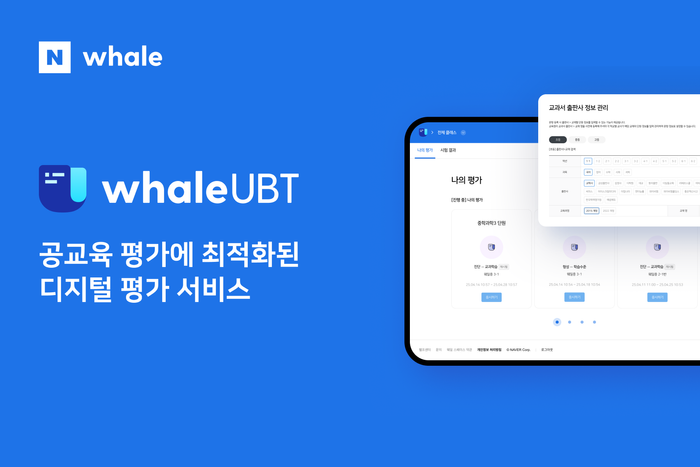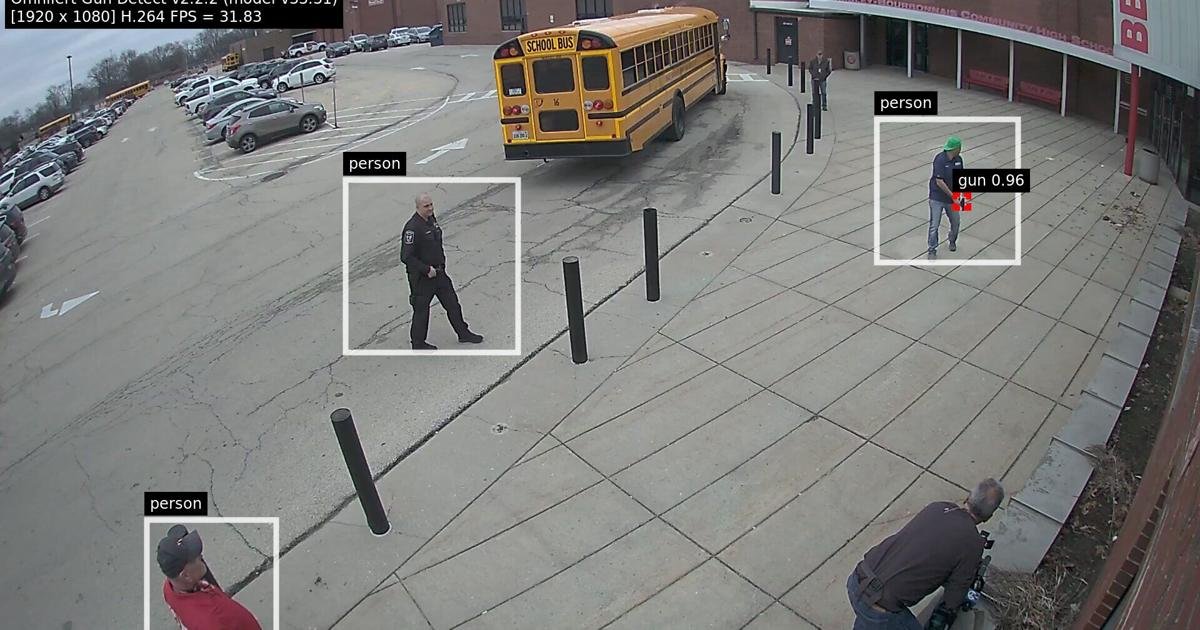Education
Korean tech companies eye growing AI public education market

Artificial intelligence (AI) is bringing a fresh wave of innovation to South Korea’s public education sector. big tech companies are actively developing AI-based solutions for public education and forming partnerships with schools alongside edtech startups.
According to the information technology (IT) industry on Sunday, Naver launched a digital public education support system called Whale UBT in April 2025 and integrated it into the Gwangju Metropolitan Office of Education’s teaching-learning platform, Gwangju AI-ON. Naver also plans to expand adoption to other regional education offices
Whale UBT allows for the unified management of various test items – including diagnostic and unit assessments – within a single platform. A database of about 400,000 questions provided by four educational publishers is available, enabling teachers to create customized tests based on students’ levels.
It also features automatic grading.
To date, AI education platforms were adopted more rapidly in private education, where entry requirements are comparatively less restrictive. The use of AI tools in public education was initially determined by individual teachers; however, their implementation has been rapidly increasing at both the school and district levels.
This trend is driven in part by the increasing sophistication of AI solutions. These tools now go beyond simply marking answers right or wrong – they can analyze step-by-step processes for descriptive questions, improving both convenience and educational outcomes.
A good example is edtech startup Turing Co.’s math learning platform, Math King. Turing signed a memorandum of understanding with the Korea Association of Future Education Study in February 2025 to promote adoption of Math King in Korean schools.
Math King can generate personalized problem sets for each student in just one second, and AI analyzes even the descriptive answers in homework assignments. The system automatically generates consultation reports that can be sent to parents and includes recommendations for future learning directions.
“We are using Math King for advanced classes, and it has eliminated the hassle of creating customized math problems,” Gyeonggu High School teacher Park Jun-hyung said. ‘I can now manage nearly twice as many students.”
AI solutions also help with administrative tasks, significantly reducing teachers’ workloads, particularly for writing student records.
While many teachers have already been using tools like ChatGPT informally for record writing, new, more convenient solutions are now being developed. These specialized AI tools offer stronger security than ChatGPT.
Edtech startup Elements launched inline AI in April, a solution specifically designed to assist with student record writing. It employs a local Retrieval-Augmented Generation (RAG) system, ensuring that data is not sent externally. The AI updates student records automatically based on data from teachers and students.
Given the rapid growth of the AI education market, adoption in public education is expected to accelerate even further. According to market research firm Straits Research, the global AI education market is projected to grow from $4.43 billion in 2024 to $72.45 billion in 2033.
By Ahn Sun-je and Lee Eun-joo
[ⓒ Pulse by Maeil Business News Korea & mk.co.kr, All rights reserved]
Education
ATS Breathe Easy – Lessons Learned from AI in Medical Education
Education
Seiji Isotani’s Mission to Humanize AI in Education
Newswise — As Penn GSE expands its leadership in AI and education, newly hired associate professor Seiji Isotani adds a vital perspective shaped by decades of work in Brazil, Japan, and the United States.
A pioneer in intelligent tutoring systems, Isotani develops AI tools that adapt to the needs of students and teachers—especially in under-resourced settings. But for him, technology is never the starting point.
In this Q&A, he reflects on the childhood experience that launched his career, the importance of human-centered design, and why responsible AI must begin with understanding the people it’s meant to serve.
Q: What originally drew you to the field of educational technology?
A: Working with educational technology holds special meaning for me, inspired by a personal experience. As a child, I struggled in school. I couldn’t read or work with numbers at age 7, and some even thought I had a learning disability. Fortunately, my mom, a talented public school math teacher, and my dad, a professor at the University of São Paulo, worked with me every night until I caught up. Eventually, we discovered that my difficulties were due to issues with vision, communication, and hearing.
Once those were addressed, everything changed. I went from falling behind to becoming one of the top students, especially in STEM subjects.
That transformation lit a fire in me. I wanted to help others experience that same change, and I started to help other students with their struggles during class. When I got my first computer at age 11, I was instantly in love. I taught myself to program and quickly realized that I could use this technology to help other students learn in ways that worked for them. That spark led me to educational technology, and it still fuels my work today, particularly in one of my main research areas: intelligent tutoring systems.
Q: Your work explores the use of AI to improve learning. What’s one way you think AI could genuinely help students or teachers?
A: One of the most exciting ways AI can make a difference is by acting as a true partner for teachers, helping them do what they already do well or even improve their practices, but with more insight and support. By deeply understanding teachers’ needs (as explored in my recent study) and developing AI-powered tools like those in the MathAIde project, we’ve shown that even in resource-constrained environments, teachers can receive timely, actionable feedback about their students’ learning. They can use AI to plan lessons more efficiently and get personalized suggestions for tailoring activities to each learner’s needs.
At the same time, students benefit from more engaging and personalized learning experiences, including gamified elements that adapt to their interests and help keep them motivated (as evidenced in another study of mine). It’s not about replacing teachers or increasing students’ cognitive offload. It’s about giving both teachers and students “superpowers” so they can shine and show all their might.
Q: What drew you to join the faculty at Penn GSE?
A: Honestly, I couldn’t imagine a better place to do the work I care about. Penn GSE is a powerhouse when it comes to rethinking education through innovation. I’ve admired the school’s deep commitment to investing in the field of AI in Education to create real-world impact, especially in K–12 education.
The opportunity to contribute to and grow with Penn GSE, by helping build a strong program that not only trains the next generation of AI in education leaders but also shapes the global conversation on how AI can support more accessible and meaningful learning experiences, is incredibly exciting to me!
Penn is already leading the AI in education agenda across top universities in the U.S. and around the world, and the chance to be part of that movement is truly inspiring. After meeting the faculty and students, it became crystal clear to me: this is where I want to be to help change the world. I’m especially excited to collaborate with such a passionate and visionary community made up of people who, like me, are committed to making education more human, more engaging, and more inspiring through the thoughtful and responsible development and use of AI.
Q: You’ve worked in both Brazil and the U.S.—how have those experiences shaped your perspective on education and innovation?
A: Working in Brazil and the U.S. has certainly shaped my perspective, and adding to my journey, I’ve also had the opportunity to collaborate closely with researchers and schools in other countries, such as Japan, where I completed my doctoral studies. These experiences across very different educational systems and cultures have given me the flexibility to embrace multicultural environments, understand diverse classroom contexts, and navigate the complexities of working in both low- and high-income communities.
What I’ve learned is that challenges in education are not exclusive to any one region. Whether I am working in a rural school in the Amazon, an urban district in the U.S., or a high-tech classroom in Japan, I encounter students and teachers who struggle, whether due to lack of infrastructure, insufficient support, or systems that do not fully meet their needs. These shared struggles, though expressed differently across contexts, have helped me become more connected to what really matters: understanding people and their goals. This is why a human-centered approach is at the heart of my work. For me, it’s not just about gathering data or training AI models. It’s about what we can do with AI and data to help people learn better, teach better, and feel more empowered. Designing AI in education means listening deeply to communities, co-creating solutions with them, and ensuring that the tools we develop truly serve the people they are meant to support.
Q: What’s something surprising or lesser known about your research that you enjoy sharing with others?
A: One thing that often surprises people is that I tend to avoid starting my projects by advocating for the use of AI. Even though I’m deeply involved in AI in education, I actually try to avoid introducing AI at the beginning, especially when the goal is to improve public policy through technology.
In fact, when people ask me, “How can we use AI to improve education policy?”, my first response is usually a question: “Do you already have a shared vision for the kind of education you want in your country or community? Do you have an understanding of the needs of your teachers, principals, students, and families?”
If we can’t answer those questions clearly, it’s very hard to use AI effectively, because we don’t yet know why we need AI or how it should be developed or used to actually serve the people it’s intended to help.
Thus, whether I’m working with a ministry of education or a local school, I begin by engaging deeply with people on the ground. And sometimes, AI is not the silver bullet; in fact, it often isn’t. What tends to work best is not AI alone, but a thoughtful combination of AI with practices rooted in the learning sciences and well-established educational strategies (e.g., structured pedagogy). Nothing flashy, just what works.
Q: When you’re not thinking about research, how do you like to spend your time?
A: Outside of work, my favorite role is being a dad. Spending time with my 4-year-old son and 8-year-old daughter brings me so much joy. They constantly remind me that the true wonders of the world live in small discoveries, in the curiosity to learn about everything, and in the joy of sharing what you’ve learned with those you love.
I have also practiced Judo for about 35 years. In my early days, I trained professionally for competitions and was fortunate to win state and national championships a few times. Although I had to stop training during the pandemic and haven’t returned to a dojo since, I hope to resume my practice in Philadelphia. In the meantime, I still enjoy “training” and playing Judo with my kids at home.
Finally, I also love trying new foods, exploring different cultures, and occasionally watching anime, a fun reminder of my “otaku” days back when I lived in Japan.
Q: Are you more hopeful or cautious about the role of AI in education over the next decade—and what gives you that outlook?
A: You tell me. Just kidding! I’m definitely more hopeful, but in a grounded and thoughtful way. AI is already shaping our society, and it holds incredible potential to transform education for the better, especially when it’s designed responsibly with people and for people. I’ve seen what happens when we get it right: teachers feel empowered, students feel seen and supported, and learning becomes more meaningful, engaging, and joyful.
I have a strong sense that once we move past this initial wave of hype and the overemphasis on the technology itself, we will enter a new phase. That is when the real breakthroughs in AI for education will emerge, focused on truly serving educational needs and empowering communities.
Education
Roseburg Public Schools installs AI tech for added security layer – nrtoday.com
-

 Business2 weeks ago
Business2 weeks agoThe Guardian view on Trump and the Fed: independence is no substitute for accountability | Editorial
-
Tools & Platforms1 month ago
Building Trust in Military AI Starts with Opening the Black Box – War on the Rocks
-

 Ethics & Policy2 months ago
Ethics & Policy2 months agoSDAIA Supports Saudi Arabia’s Leadership in Shaping Global AI Ethics, Policy, and Research – وكالة الأنباء السعودية
-

 Events & Conferences4 months ago
Events & Conferences4 months agoJourney to 1000 models: Scaling Instagram’s recommendation system
-

 Jobs & Careers2 months ago
Jobs & Careers2 months agoMumbai-based Perplexity Alternative Has 60k+ Users Without Funding
-

 Podcasts & Talks2 months ago
Podcasts & Talks2 months agoHappy 4th of July! 🎆 Made with Veo 3 in Gemini
-

 Education2 months ago
Education2 months agoMacron says UK and France have duty to tackle illegal migration ‘with humanity, solidarity and firmness’ – UK politics live | Politics
-

 Education2 months ago
Education2 months agoVEX Robotics launches AI-powered classroom robotics system
-

 Funding & Business2 months ago
Funding & Business2 months agoKayak and Expedia race to build AI travel agents that turn social posts into itineraries
-

 Podcasts & Talks2 months ago
Podcasts & Talks2 months agoOpenAI 🤝 @teamganassi



